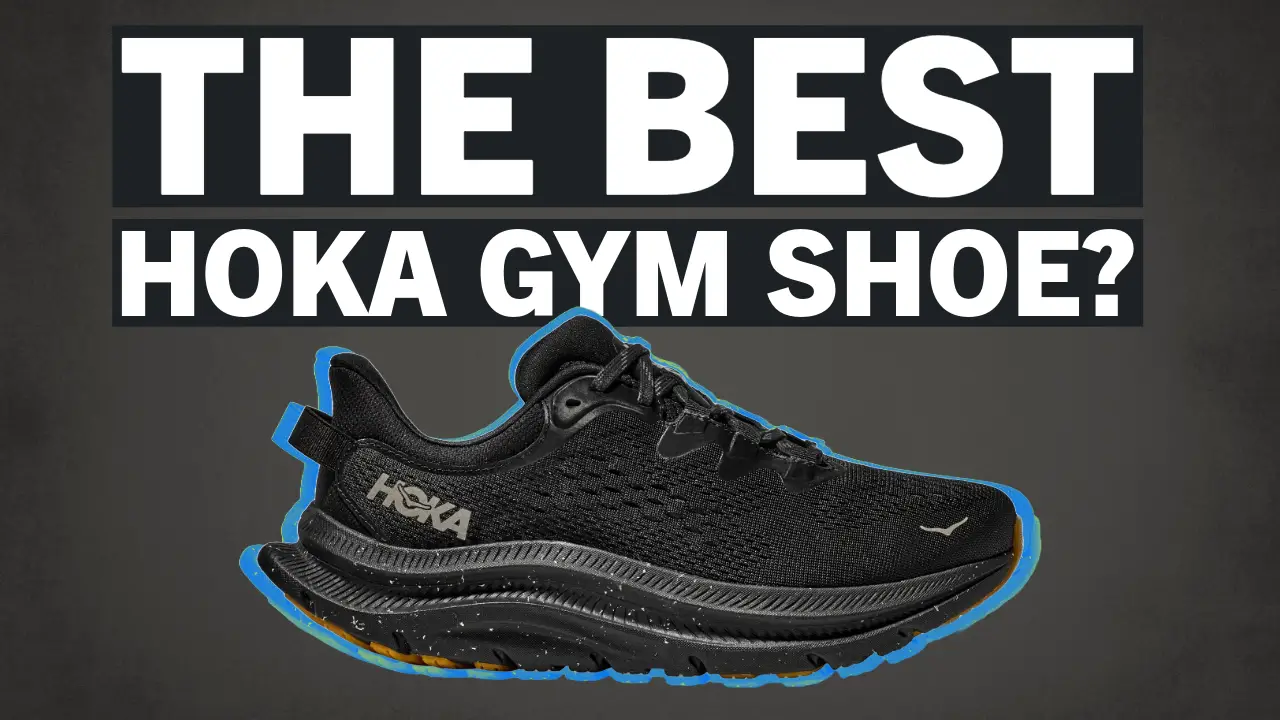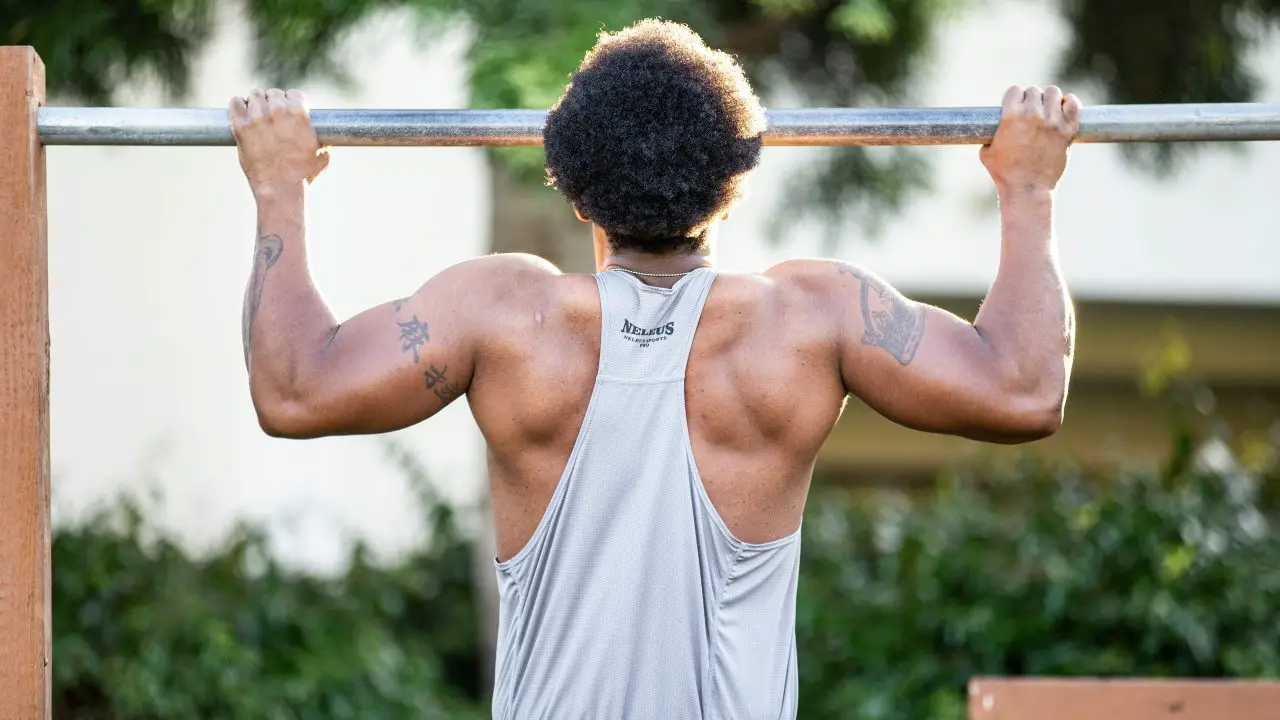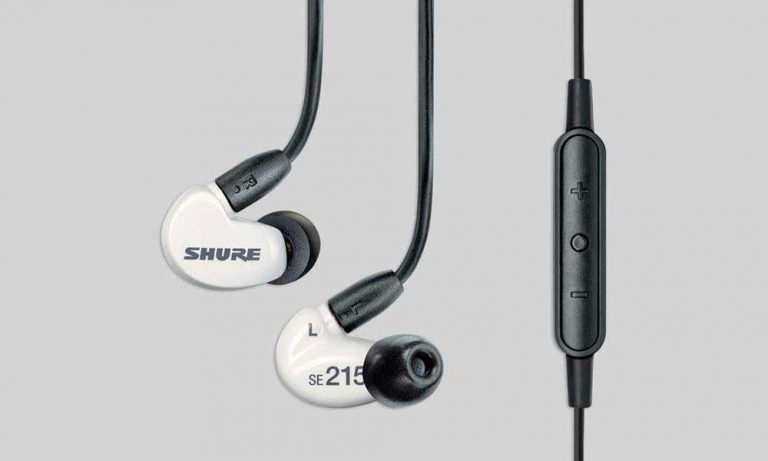How to Improve Grip Strength: Quick & Easy Tips

ListedFit is reader-supported. When you buy through links on our site, we may earn a small commission.
Grip strength is an essential aspect of our daily lives, as it allows us to perform various activities ranging from simple tasks like opening a jar to more complicated ones like holding on to weights during a workout.
Improving your grip strength can improve your gains greatly in the gym, you’ll be able to deadlift more, you may be able to move on to weighted pull-ups too and you won’t have to rely on using straps either!
In this article, I’ll go through the different types of grip strength, different exercises to enhance it, and how to measure your grip strength progress.
Quick Summary

Grip strength is an important starting point for both men and women when it comes to training.
Having good grip strength will enable you to do the most effective exercises for improvement and muscle gain.
There are three primary types of grip strength: crushing, pinching, and supporting. Crushing involves using your fingers and the palm of your hand to clasp objects while pinching relies on your fingers and thumb to hold items securely.
Supporting grip strength is essential when carrying or gripping heavier weights for an extended period such as performing deadlifts or pull-ups.
With the importance of grip strength in mind, it’s crucial to utilise a targeted approach to maximise gains and ensure each type of grip strength receives adequate attention.
From basic exercises to more advanced techniques, incorporating proper grip training will lead to noticeable improvements in various aspects of your life, from sports performance to daily routines.
Key Takeaways
- Improving grip strength has wide-ranging benefits that impact daily tasks and overall physical performance.
- It’s essential to understand the three primary types of grip strength: crushing, pinching, and supporting.
- Incorporating targeted exercises and measuring progress can lead to noticeable improvements in grip strength.
Table of Contents
Understanding Grip Strength
Grip strength is an essential aspect of your overall health and can act as a biomarker for predicting mortality risk. It involves the power of your hand and forearm muscles, playing a crucial role in your general strength and everyday tasks. By increasing your grip strength, you can improve both your mental health and physical capabilities.
To assess your grip strength, you can apply a grip trainer or a hand dynamometer, focusing on your dominant hand. Don’t worry if it’s not perfect; it’s something that can be improved with practice and targeted exercises.
Begin by mastering the different types of grip styles. Crush grip involves the entire hand closing in around an object, like when you’re giving a firm handshake. Pinch grip, on the other hand, refers to the force you can apply between your fingers and thumb when grasping an object. Smaller muscles in your forearm and hand work together for an effective pinch grip.
Practising various targeted exercises will help you increase your grip strength. For instance, using a stress ball or tennis ball to build your crush grip, or performing pinching exercises to enhance your pinch grip. As you progress, you may also incorporate weightlifting and other grip-enhancing exercises in your workout routine.
Remember, consistency is key when it comes to improving grip strength. Keep up with the exercises, and soon enough, you’ll notice improvements in your overall health and daily functionality. Don’t forget to factor in some rest days for muscle recovery!
The Importance of Grip Strength
Grip strength is essential in maintaining overall fitness and balance, particularly for your hands, fingers, forearms, and wrists. It’s not just about showing off your muscles or performing impressively in the gym. Let’s dive in and chat about why grip strength is crucial and how it impacts various aspects of your life.
First off, stronger grip strength helps you perform daily tasks with ease, be it driving, carrying your shopping bags, or even opening a tightly-closed jar. For the sporty types, a good grip is essential in activities like rugby, pull-ups, or weightlifting, ensuring you can perform your best without risking any injuries.
As you age, maintaining muscle mass in your back, hips, knees, and other areas becomes increasingly important. Maintaining grip strength plays a key role in combating sarcopenia – the age-related loss of muscle mass. This helps older adults maintain their mobility and balance, reducing the risk of falls, fractures, and carpal tunnel syndrome.
Working on your grip isn’t just about your hands and fingers; it also benefits your forearm muscles, wrist strength and even contributes to bone density. By devoting time and effort to improving your grip, you indirectly support your forearms and wrists, which are crucial in day-to-day tasks and physical activities.
In short, a strong grip is a vital component of overall fitness, supporting balance, functional movements, and injury prevention. So, make sure to give your hands, fingers, forearms, and wrists the attention they deserve, and you’ll reap the benefits across various aspects of your life.
Types of Grip Strength
In your grip training journey, it’s essential to know the three main types of grip strength. By focusing on these, you can improve your overall performance in various activities that require a strong grip.
Crush grip is all about how much force you can generate using your fingers and the palm of your hand. It’s the kind of grip you think of when you imagine giving a firm handshake or crushing a can. To develop this grip, focus on exercises that involve closing your hand around an object like a stress ball or a gripper.
Pinch grip involves the force you can generate between your fingers and thumb. Imagine making an alligator mouth with your hands, grasping an object tightly between your fingertips. Pinch grip is an essential element in tasks that require precision and control, like holding a weight plate. Training your pinch grip can include exercises such as performing pinch holds using a weight plate, block or a thick book.
Support grip refers to your ability to maintain hold of an object for an extended period, providing consistent strength and endurance. It’s crucial for activities like rock climbing or carrying heavy bags. To build your support grip, take up exercises that involve hanging from a bar for as long as possible or carrying weighted objects like kettlebells, dumbbells or even farmer’s walks.
Each of these grip types plays a role in different activities, and it’s essential to train for all three to achieve a well-rounded grip strength. Remember that the key to effective grip training is consistency and dedication. Good luck with your training, and keep up the good work!
Different Exercises to Improve Grip Strength
If you’re looking to enhance your grip strength, there are various exercises you can try. Incorporating these into your regular workout routine will not only assist with common activities such as climbing, tennis, golf, and weightlifting but also build endurance and overall hand strength. Let’s dive into some of the most effective exercises to get you started:
1. Dead Hangs: Simply find a pull-up bar, and hang onto it with both hands, palms facing away from you. Maintain a strong grip and hang for as long as you can. Try to work up to holding your body weight for at least 30 seconds, and over time, gradually increase the duration.
Don’t worry too much if the height of the bar doesn’t allow your body to fully hang. Just make your legs go limp and hang as much as you can until you feel the strain and go again and again until your grip strength has really been put to the test.
2. Towel Chin-ups: The towel chin-up in my opinion is a game changer. This unique variation of chin-ups will push your grip strength to the next level.
Take a gym towel, throw it over a pull-up bar, and grip onto each end of the towel. Now perform chin-ups as usual, using the towel as your “handles.” This exercise works the fingers, forearms, and biceps, providing a real full upper-body challenge. See the demonstration video below.
3. Deadlifts: Deadlifts are known for targeting your posterior chain, including your glutes and hamstrings. But this workout is also excellent for enhancing grip strength. As you lift heavier weights, your grip will be put to the test, forcing it to strengthen over time.
Note: You may find that your grip strength doesn’t improve as much as the weight you feel you can deadlift, many people use straps for this reason, but in my opinion, it’s more useful to go harder on some of the other tips for this reason. Utilise towel grips and dead hangs in this scenario.
4. Farmer’s Carry: This is a really easy exercise, it involves carrying weights with one or both hands while maintaining a steady, brisk walk.
Choose dumbbells that are heavy enough to really challenge your grip, keeping your arms straight and shoulders back as you walk. Aim for 30-45 seconds of walking before resting and then repeating. To intensify this, consider using some special grips to really speed things up and make your hands work harder.
5. Plate Pinches: Grip a weight plate at waist height between your thumb and fingers, pinching the plate rather than wrapping your fingers around it. Hold this position for as long as you can before lowering the plate back down. Try working with different weights and durations to increase the challenge.
6. Tennis Ball Squeeze: This is a straightforward exercise you can do while sitting at your desk or watching TV. Simply take a tennis ball or stress ball and squeeze it for 5 seconds before releasing. Repeat 8-12 times for several sets, or until your grip strength fatigues.
7. Use a heavy duty grip training device: These can be very effective in a short amount of time. I like these because you can easily focus on a rep count with these and do them while you watch TV.
8. Wrist Curls and Reverse Wrist Curls: For this final exercise, sit on a bench or chair with dumbbells in each hand. Rest your forearms on your thighs with palms facing up for wrist curls, and palms facing down for reverse wrist curls. Curl your wrists upward slowly and with control, then release back to the starting position. Do 8-12 reps for a few sets to get those forearms burning.
I’d say that achieving a strong grip is essential to being able to do more of the exercises that can really build muscle in a shorter amount of time.
How to Check Your Grip Strength
To check your grip strength, you can use a handgrip dynamometer. It’s one of the most conventional and accurate ways to test your grip strength. You might find a dynamometer at your local gym or fitness centre, and you can also purchase one to use at home.
Using a handgrip dynamometer is pretty straightforward. First, adjust the handle to fit comfortably in your hand according to the manufacturer’s instructions. Next, hold the dynamometer in your hand with your arm bent at a 90-degree angle. Ensure you’re in a comfortable standing position with your body relaxed.
But I know, most people won’t have access to a dynamometer, before I started writing this article I didn’t even know that’s what they were called!
The method below to test your grip strength at home without a dynamometer is a lot easier.
How to Check your Grip Strength Without a Dynamometer
Remember, while checking your grip strength is useful in providing a baseline for improvement, it’s not the end goal. Be sure to combine the grip strength measurements with proper training and exercises to achieve better results. And most importantly, have fun and enjoy the process!
Frequently Asked Questions
What are the best grip strength exercises?
Some great grip strength exercises include heavy deadlifts, farmer carries, plate pinches, pull-ups, reverse grip curls, dead hangs, and towel wringing.
These exercises target different aspects of your grip strength and help develop your forearm and hand muscles.
Which machines help enhance grip strength?
For grip strength improvement, try using machines like cable machines with various attachments, hand grippers, and even rowing machines.
These machines will help target specific muscles in your forearm and hand, leading to a stronger overall grip.
What kind of training equipment boosts grip strength?
To boost your grip strength, make use of stress balls, tennis balls, grip trainers, or even resistance bands.
These tools will help you focus on building strength in your fingers, palm, and forearm muscles.
How can climbers work on their grip strength?
Climbers can work on their grip strength by practising grip-intensive exercises such as dead hangs, pull-ups, and fingerboard routines.
Additionally, incorporating open-hand and pinch grip training into their regimen helps target key grip muscles used in climbing.
What are some grip strength exercises for older adults?
Older adults can improve their grip strength with low-impact exercises such as squeezing a stress ball, performing wrist curls, and doing elastic band exercises for the hands and fingers.
These gentle exercises will help you to maintain muscle mass and prevent muscle atrophy.
How does one test their grip strength?
If you want a precise reading of your grip strength, the tool to use is a dynamometer. This device measures the force applied when you squeeze its handle.
If you don’t have a dynamometer (and many people don’t) you can just squeeze a bathroom scale and see what number you get.
Or you can perform a simple self-assessment exercise by squeezing an object and judging your grip strength based on its resistance.
Author
-
Stuart Patrick is a health and fitness lifestyle journalist who writes for ListedFit.com.
“I've spent a lot of time trying to get in shape and change my body and I realised there are so many untruths in the health and fitness industry that can slow down or stop your progress, so I share my knowledge and experience to help others to cut through the BS.”
Latest entries
 NutritionJune 5, 2024Shilajit Products
NutritionJune 5, 2024Shilajit Products FitnessMay 14, 2024Donate Blood
FitnessMay 14, 2024Donate Blood GearApril 6, 2024HOKA Kawana 2 Review – Are These The Best HOKA Gym Shoes?
GearApril 6, 2024HOKA Kawana 2 Review – Are These The Best HOKA Gym Shoes? CrossFitApril 4, 2024How Many Pull-Ups Should I Do Daily? Let’s Figure it Out…
CrossFitApril 4, 2024How Many Pull-Ups Should I Do Daily? Let’s Figure it Out…
Affiliates:
This post may contain affiliate links that at no additional cost to you, the site may earn a small commission. We only recommend products we would use ourselves and all opinions expressed on this site are our own.
General Advice:
The information provided in this article is for general informational purposes only. It is not intended as a substitute for professional advice. Always consult with a qualified healthcare professional before starting any new diet, exercise program, or making changes to your health routine.
Accuracy Advice:
While we strive to provide up-to-date and accurate information, the content in this article may not reflect the most current research or medical guidelines. We encourage readers to do further research and consult with professionals for more personalized advice.
Our Recommendations:
The products and services mentioned in any of our articles are recommended based on our independent research and personal experience. We are not sponsored by any company. We aim to suggest products and services we believe are of high quality and could be beneficial to our readers.






Improving grip strength is quite challenging and requires patience too. It took me almost a month to fully get a strengthened grip and I arrived there by constantly holding on to bars.
Rubber bar grips are the best way to get your forearm strengthened. The rough edge challenges you to keep adjusting and tightening your grip and so helps strengthen your grip.